Creating a vegetable garden layout doesn’t need to be complex or difficult. Taking the time to draw out your design will make life much easier, trust me. In this post, I will give you detailed step-by-step instructions for how to design a vegetable garden.

Drawing your vegetable garden layout may sound like a lot of work, but it really isn’t difficult. You don’t need any expensive computer program, or mad geometry skills either. Heck, you don’t even need to be able to draw!
When spring comes, and you walk out to your backyard armed with your sketch, you’ll be thrilled that you took the time to do it. It makes planting and growing vegetables so much easier!
I learned this lesson the hard way, and I don’t want you to struggle like I did! So, I am going to show to how to design a vegetable garden, from scratch.
If that makes your palms sweat, don’t worry, your drawing doesn’t need to be fancy. I am going to simplify this for you, and give you detailed step-by-step instructions. Plus, it’s going to be fun too!
Why You Should Design Your Vegetable Garden Every Year
When I first started gardening, planting my vegetables every year was very stressful. That’s because I would just go out there each spring, and start planting stuff with no plan.
Soon I would run out of room, but I’d still have tons of seedlings leftover. Of course I didn’t want all those seedlings (that I had babied for months) to go to waste, so I would just cram them in wherever I could find a space.
As a result, my vegetable garden was always overcrowded. That not only looked bad, but it also made maintenance and harvesting very difficult. Plus, my claustrophobic veggies produced less because they didn’t have enough room to grow.
It was also hard to properly rotate my crops from year to year, since I couldn’t always remember where everything was growing before. Rotating crops is difficult in a small veggie plot anyway, and pretty much impossible without a design layout.
Ugh, I used to make things so difficult for myself! And I struggled with this for years, until I finally learned (the hard way) that I needed to think ahead.
So now I always sketch out my vegetable garden design ahead of time. Doing this has been a game changer for me, and I will never go back to my old ways.
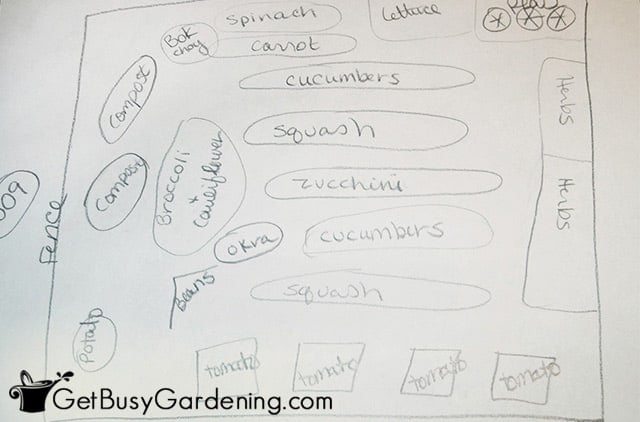
Creating Your Vegetable Garden Layout
Before I get into the detailed steps for how to design a vegetable garden, I wanted to talk about the benefits first. Then I will give you some tips for making it easy to create your drawing.
Benefits Of Having A Custom Sketch
I’ve already touched on a few of the benefits in my story above, but I wanted to list them here for you as well.
So, just in case you’re not quite convinced why you need to create a vegetable garden design, here are the benefits to help sway you…
- Easier to calculate how many plants you need – Without a vegetable garden design, it’s difficult to figure out how many seeds or plants you will need. So, when you end up with tons of leftovers at planting time (like I used to have), you’ll be tempted to overcrowd your veggies.
- Prevents pest and disease issues – Over-planting will not only make your vegetable plot less productive, it’s also a recipe for disaster. When veggies don’t have enough space, it’s an invitation for bugs and diseases to take hold, and spread quickly to other plants.
- Relieves your stress – Designing your vegetable garden ahead of time not only takes the stress out of planting, but harvesting and maintenance too. When you give yourself plenty of space to work, you will easily be able to see and reach everything.

- Allows for good record keeping – Saving your sketches is a great way to keep track of your vegetable patch, and how well everything did. Plus, it’s fun to look back at your sketches from the past, and see how much it all changes over the years.
- Simplifies crop rotation – Keeping all those old garden layout drawings also makes it much easier to rotate your crops. That way, you’ll be able to quickly see where everything was growing in previous years, and work crop rotation right into your design layout.
- Results in a better looking, more productive garden – Creating a design layout will ensure you give everything plenty of room to grow, resulting in a much more beautiful and bountiful veggie garden.
Just remember, plotting your veggie garden should be fun! So pour yourself a cup of coffee (or a glass of wine, ehem), sit down, get comfortable, and let’s get to it.
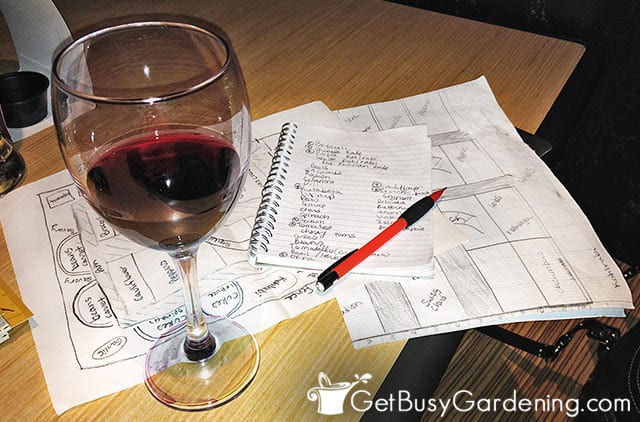
Tips For Drawing A Vegetable Garden Layout
Don’t worry, creating your own vegetable garden layout isn’t as hard as it sounds. You don’t need any fancy software, or a degree in home garden design.
You don’t even need any graph paper or any artistic ability (though it does help if you can read your own handwriting, haha!).
Check out these vegetable garden sketches my husband and I drew the other day while waiting for our food at a restaurant. Yep, those are cocktail napkins.
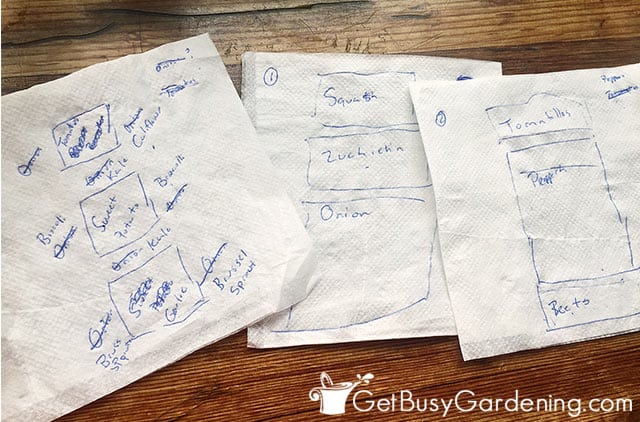
Of course, if you have a technical mind, you could pull out the graph paper, and get to work measuring, calculating, and drawing everything to scale.
I never used to do this, but I finally gave it a try after we added raised beds to our vegetable garden a few years ago.
That made using the graph paper super easy, since most of the beds are rectangular, and the same size. Now I have a design template that I can use every year.
Here’s my very first drawing using graph paper. (Please don’t be intimidated, it seriously took me years to get to this point!)
How To Design A Vegetable Garden Step-By-Step
Like I mentioned above, you don’t need anything special to create your drawing. Just a pencil and some paper. Oh, and you may want to grab a good eraser too.
Supplies Needed:
- Pencil
- Paper (or graph paper if you want to give that a try)
- Eraser
- Ruler (optional)
Step 1: Make a list of veggies – Before you start drawing your design, make a list of what vegetables you want to grow. That way you’ll have an idea of how much space you need for everything.
Step 2: Sketch out your veggie plot – Start by drawing the outline of your vegetable plot on a piece of paper (or a cocktail napkin, if you prefer).
Step 3: Add existing hardscaping – Next, add in any existing hardscapes (paths, raised beds, fences, arbors, etc). If you don’t have any existing hardscaping, then you can skip this step.
Step 4: Draw in the beds and paths – Sketch out a rough drawing of where you want to plant everything, and also where the walking paths will be.
I recommend making the paths between each bed or row at least 2′ wide. That will allow extra space for your veggies to sprawl without overgrowing the paths completely, and also give you plenty of room move around.
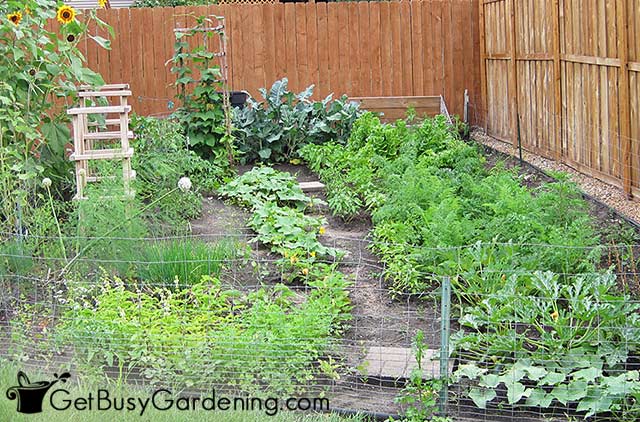
Step 5: Add the plants to your sketch – Think about where you want to grow each crop, and how to group them to make rotation easier.
You can simply note what you will plant in each area on an informal sketch. Or you can calculate the exact spacing you’ll need for each plant, and then add that to your scale drawing.
Step 6: Review your design – Visualize what your vegetable garden will look like when it’s full grown. Are you allowing enough space in your layout for everything you want to grow, and also for you to move around?
Remember, it’s much easier to make changes during the design phase than it will be at planting time. If it doesn’t fit in your layout sketch, then it’s probably not going to fit in your veggie patch either. So try to be impartial.
Step 7: Add some character – Planting everything in rows with walking paths in between can be boring, and takes up more space. So spice things, and add tons of character to take your vegetable garden to the next level!
Growing vertically not only saves space, allowing you to plant more veggies, it also adds interest. So be sure to include some trellises, arbors, or arches for vining crops into your design layout.
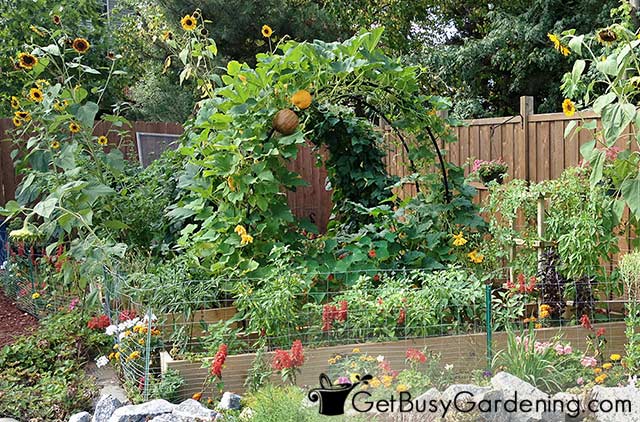
Drawing your vegetable garden layout is easy and fun! Once you get into the habit of doing it (and maybe even creating your own custom template) it will get easier every year. Just be sure to keep your sketches so that you can use them to create your designs year after year.
If you’d like to learn how to make the most of your space and get as much homegrown food as possible, then my Vertical Vegetables book is perfect! It will teach you all you need to know, has tons of gorgeous photos, and includes 23 DIY projects you can build for your own garden. Order your copy today!
Learn more about my Vertical Vegetables book here.
More About Vegetable Gardening
- A Beginner’s Guide To Companion Planting
- Beginner’s Guide to Mulching A Vegetable Garden
- How To Prepare A Garden Bed For Planting Vegetables
Share your tips for drawing a backyard vegetable garden design layout in the comments below.
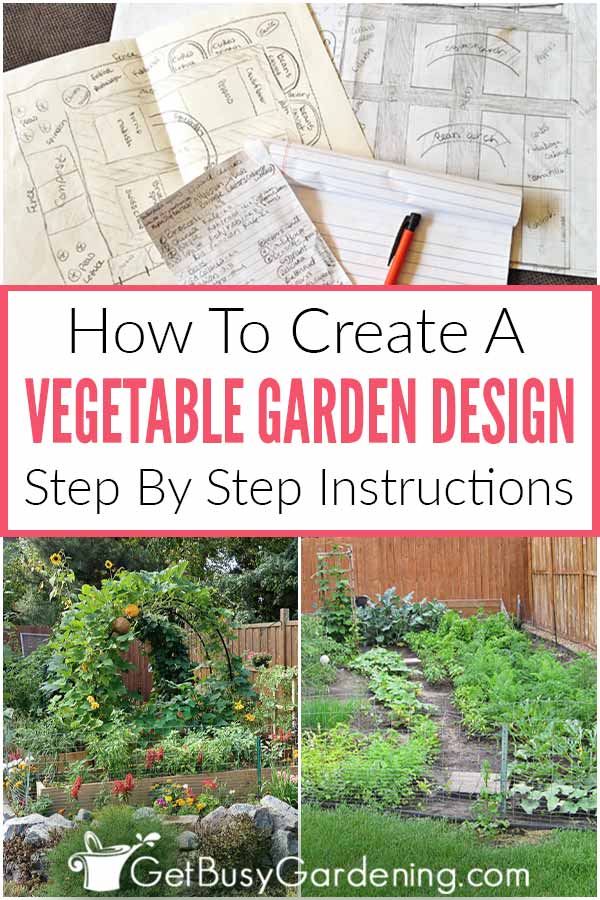
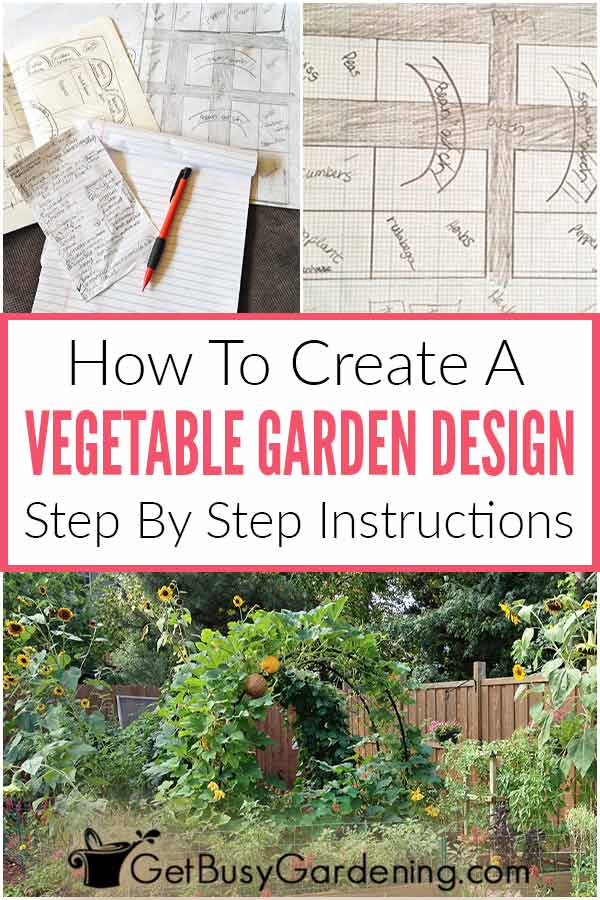
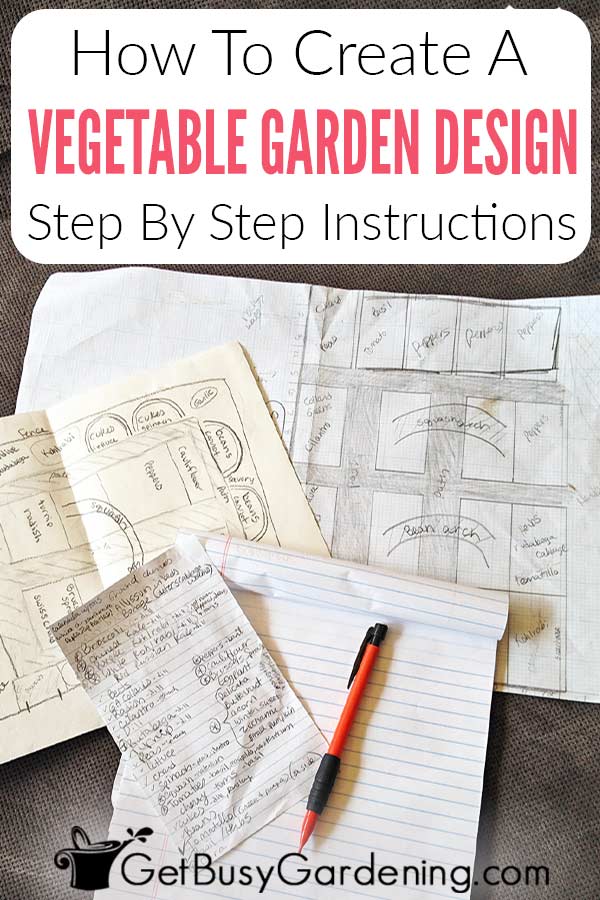

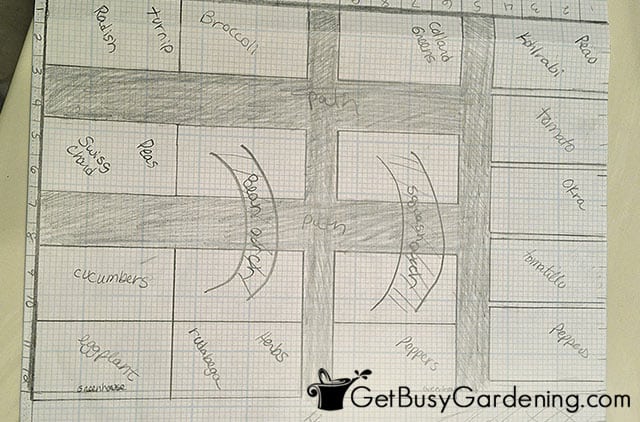


Kathy says
How do you prevent weeds? Especially bindweed. What do you use to control/prevent weeds in the rocks?
Amy Andrychowicz says
I mulch my vegetable garden to keep the weeds from taking over, here’s how… Beginner’s Guide to Mulching A Vegetable Garden. As for the ones that grow in rocks, I use a natural weed killer, or hand pick them.